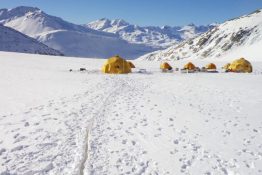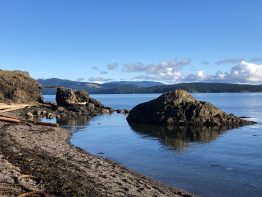The fiber-optic cables that travel underground, along the seafloor and into our homes have potential besides transmitting videos, emails and tweets. These signals can also record ground vibrations as small as a nanometer anywhere the cable touches the ground. This unintended use for fiber-optic cables was discovered decades ago and has had limited use in military and commercial applications. A University of Washington pilot project is exploring the use of fiber-optic sensing for seismology, glaciology, and even urban monitoring.
Read more at UW News »New study calculates retreat of glacier edges in Alaska’s Kenai Fjords National Park
As glaciers worldwide retreat due to climate change, managers of national parks need to know what’s on the horizon to prepare for the future. A new study from the University of Washington and the National Park Service measures 38 years of change for glaciers in Kenai Fjords National Park, a stunning jewel about two hours south of Anchorage. The study, published Aug.
Read more at UW News »Science at your fingertips: how the science of sand uncovers Earth’s mysteries
Feeling cool, wet sand squish between your toes while walking along a beach is something that many of us take solace in — there’s just something special about that boundary between land and water. The beach serves as the backdrop for so many of life’s events: vacations, barbeques, camps, seashell searches, sporting events and even weddings. But the sand you track in on your towels and sandals is more than just something to vacuum up.
Read more »Bubbles of methane rising from seafloor in Puget Sound
The release of methane, a powerful greenhouse gas responsible for almost a quarter of global warming, is being studied around the world, from Arctic wetlands to livestock feedlots. A University of Washington team has discovered a source much closer to home: 349 plumes of methane gas bubbling up from the seafloor in Puget Sound, which holds more water than any other U.S.
Read more at UW News »Simulations show how earthquake early warning might be improved for magnitude-9 earthquakes
When the next major earthquake hits the Pacific Northwest, a system launched last spring should give some advance warning, as emergency alerts go out and cell phones buzz. But how well the system functions might depend on whether that quake is the so-called “really big one,” and where it starts. The Pacific Northwest’s last magnitude-9 event from the offshore subduction zone was in 1700.
Read more at UW News »





